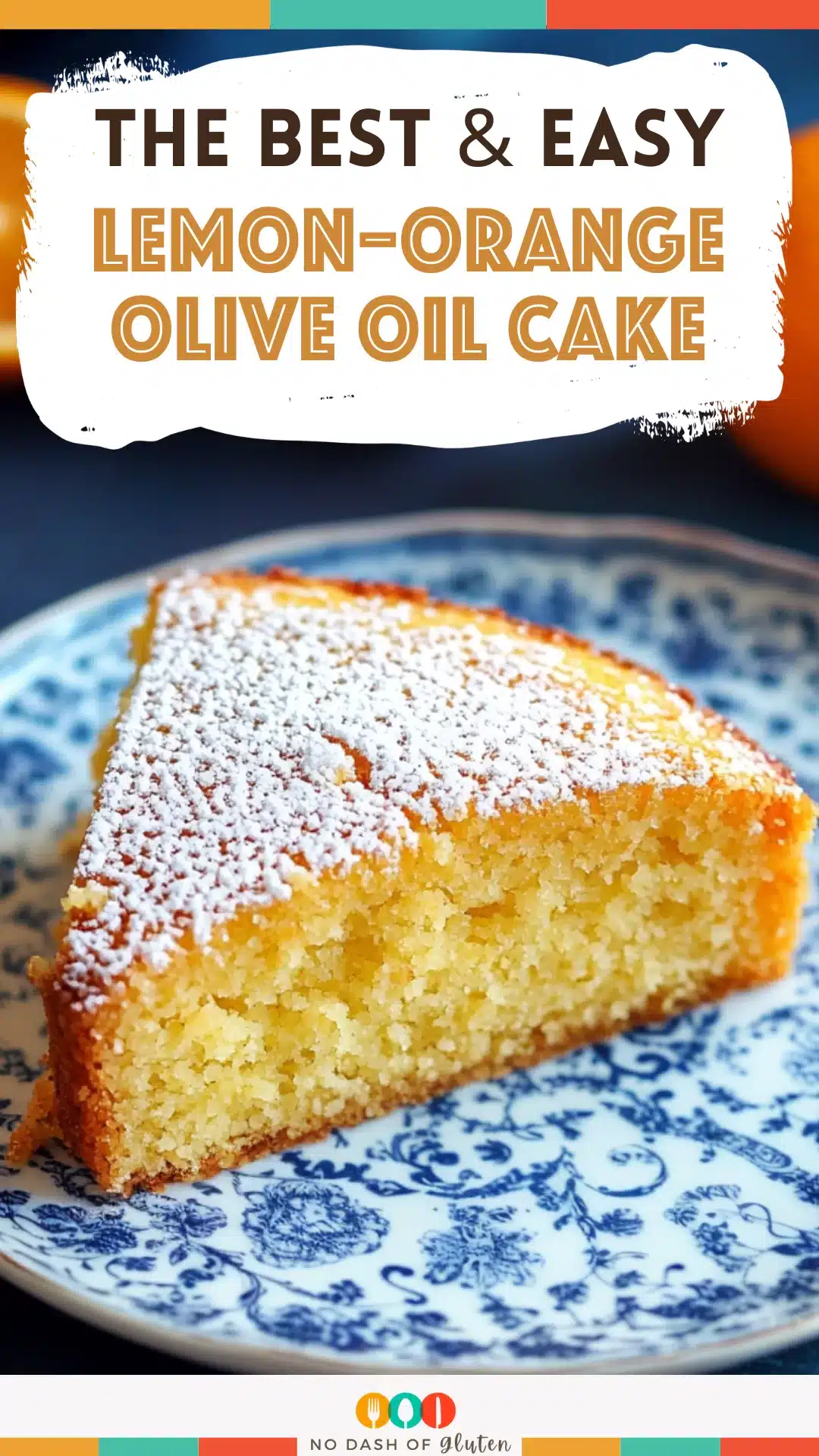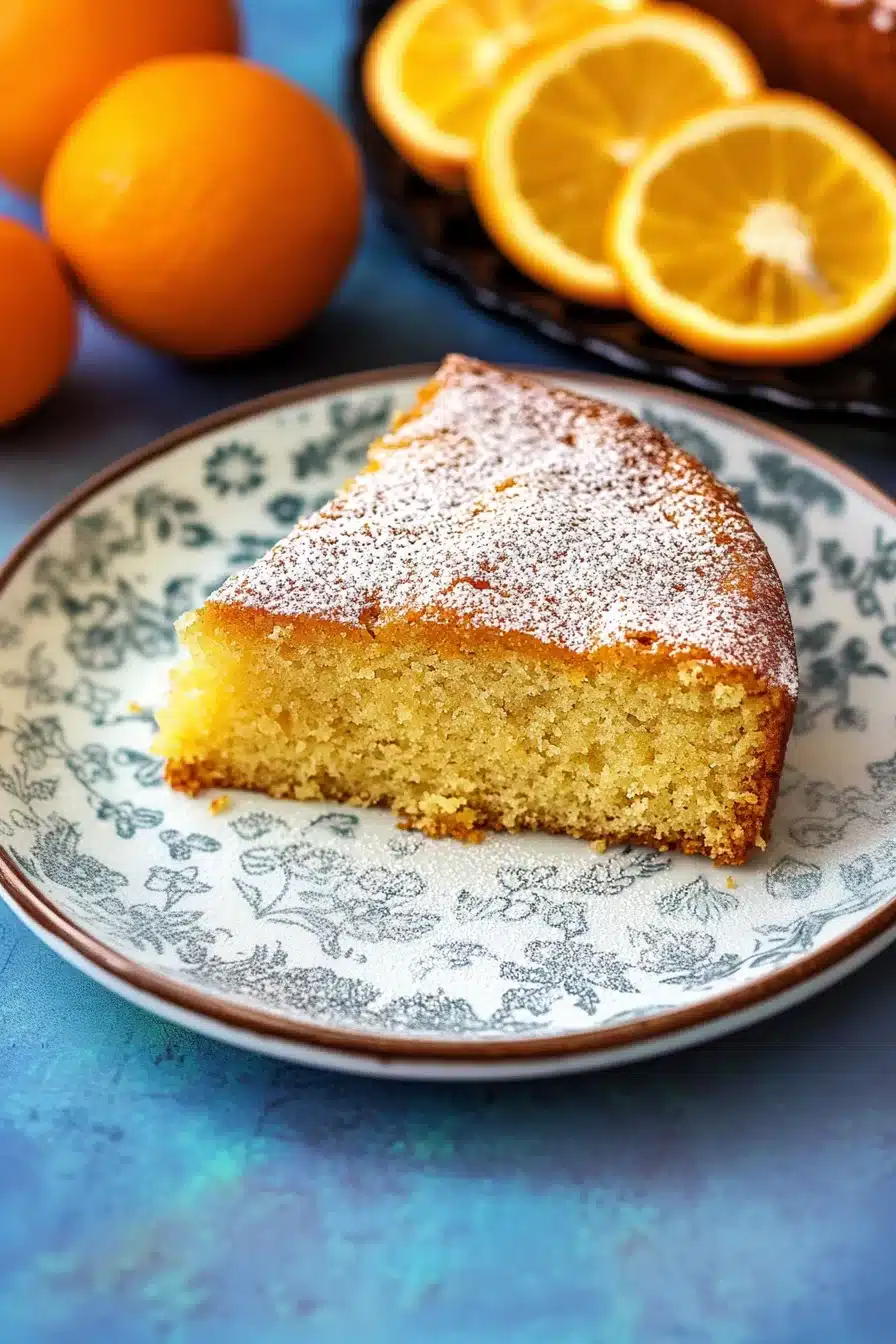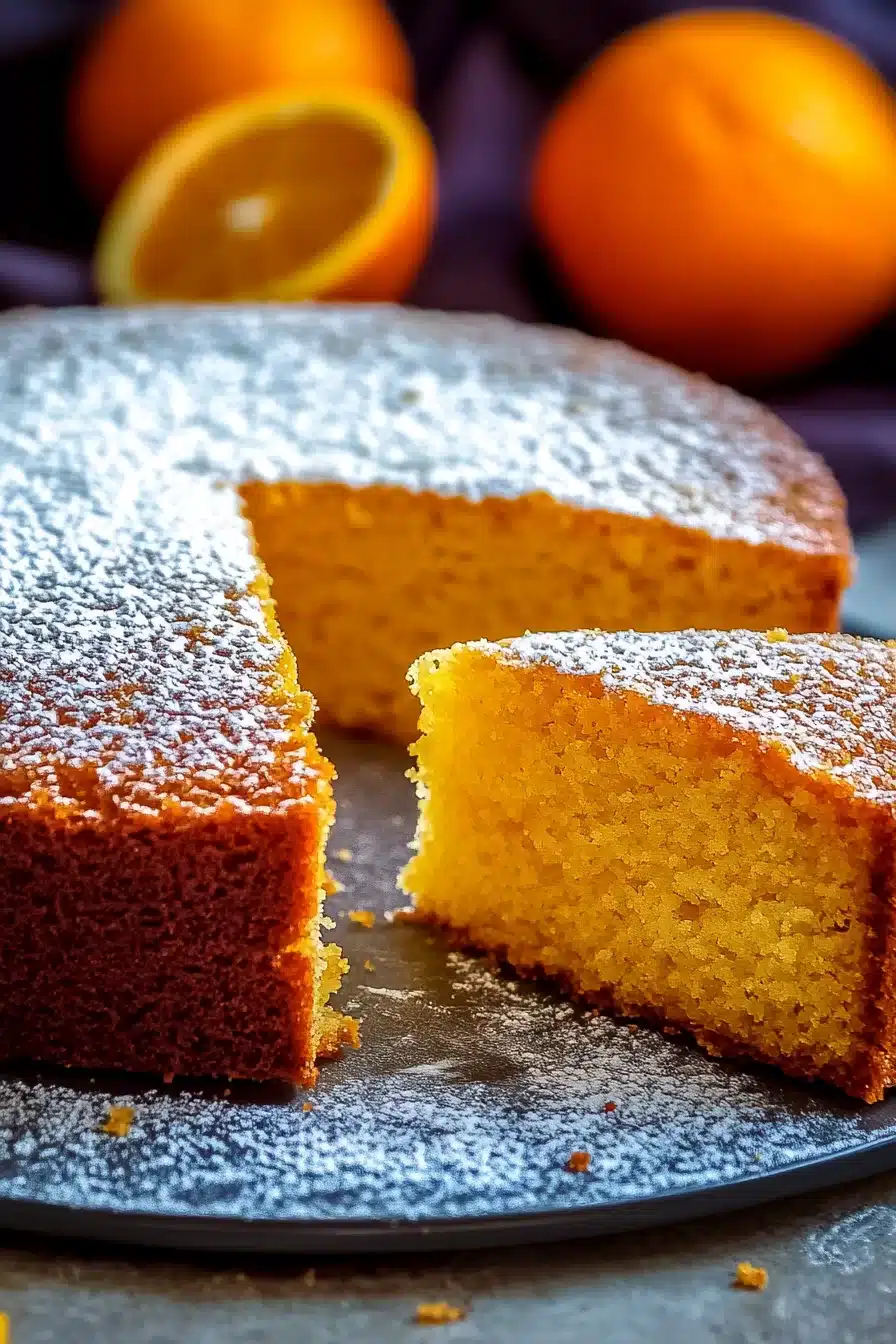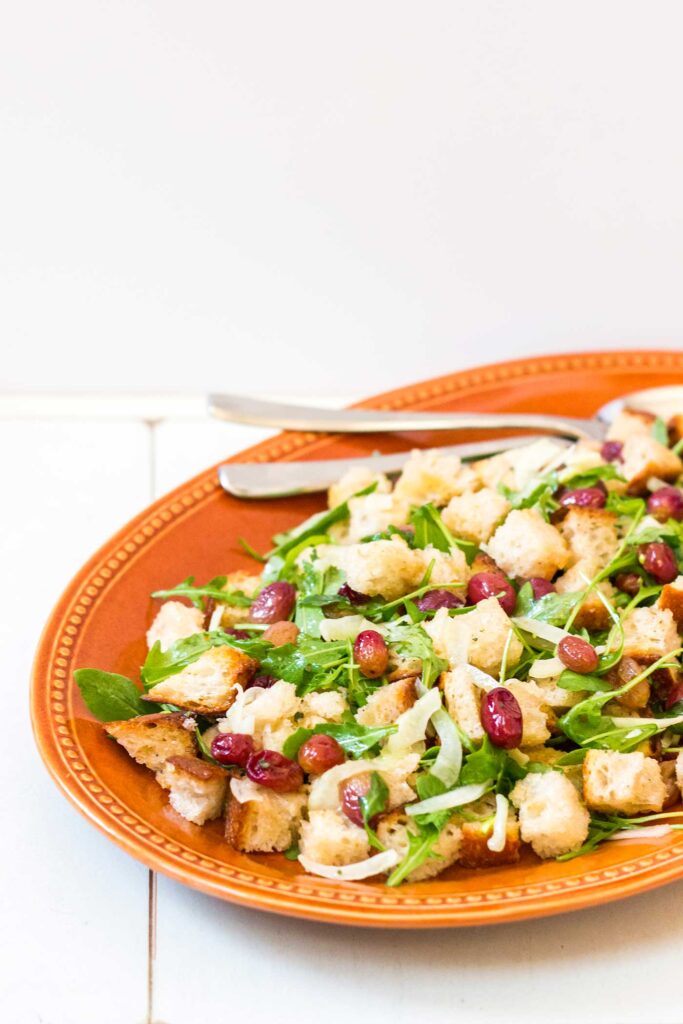
Bright citrus, buttery olive oil, and tender cake all in one bite—this lemon olive oil cake brings together eggs, flour, fruity olive oil, and fresh lemons in a simple, sunny dessert that smells like late spring and tastes like what sunshine should feel like if you could eat it.
This one’s for those moments when you want something sweet but not cloying, elegant but unfussy. It’s got a nap-in-the-sun kind of softness with just the faintest edge from the olive oil. The kind of cake that doesn’t demand sprinkles or layers or fanfare. Just a fork, maybe a cup of tea, and that one quiet window in your house where the light comes in just right. The lemon olive oil cake is tender in texture, gently sweet, and topped with a whisper-thin glaze that catches the light just so.
Table of Contents



Don’t let this one slip away — pin it now and thank yourself later!
Don’t let this one slip away — pin it now and thank yourself later!
Why You’ll Love this Lemon Olive Oil Cake
Let’s be honest. Some cakes try too hard. This one doesn’t. It just shows up moist, lemony, and perfectly low-key fancy—like it belongs in a glass cake dome on a wooden counter.
- Ridiculously simple to make: You don’t need a mixer or any special gadgets. Just bowls, a spoon, and some zest-scraping enthusiasm.
- Subtly sophisticated flavor: The olive oil doesn’t shout at you—it just kind of lingers pleasantly with the lemon like an Italian vacation.
- Keeps beautifully for days: Somehow this cake gets even better by day two. Magic? Maybe. Moisture? Definitely.
- Not too sweet: If you prefer your desserts a little more grown-up and a little less sugar bomb, this one’s for you.
- Great for brunch or dessert—or sneaky breakfast: I won’t tell if you eat it in your pajamas with coffee straight from the pot.
- Freezes like a dream: Leftover? Pop it in the freezer and thank past-you later. Speaking of freezing, here’s a whole guide on whether you can freeze olive oil too.
Ingredient Notes
This lemon olive oil cake keeps it pretty humble in the ingredient department, but each one plays a big role.
- All-purpose flour: It’s the sturdy but soft foundation—skip the cake flour, or your crumb might go too delicate.
- Granulated sugar: Just enough to sweeten without overpowering. Bonus: helps create a gorgeously golden crust.
- Baking soda + baking powder: Yes, both. One brings the rise, the other helps with browning and balance.
- Salt: A little makes everything pop. Don’t skip it. Even sweet things need a savory whisper.
- Eggs (room temp): These trap air and help the cake rise with glorious fluff. Cold eggs make the batter grumpy, so let them warm up.
- Extra-virgin olive oil: Go for a mild, fruity one (not the kind that smacks you with bitterness). It shapes the flavor and keeps it soft and rich.
- Whole milk (room temp again): Adds richness and helps the batter stay smooth and pourable.
- Fresh lemon juice and zest: This is where the brightness comes alive. Zest brings fragrance, juice brings zing.
- Vanilla extract: Just a teaspoon to round out the citrus and olive oil notes.
- Powdered sugar + more lemon juice: That’s your glaze. Tangy, sweet, and meant to drizzle carelessly and luxuriously.
How To Make This Lemon Olive Oil Cake
Okay, let’s get comfortable. This cake doesn’t throw tantrums. It cooperates. If you’ve got ten fingers and a whisk, you’re golden.
-
Prep your oven and pan: Preheat the oven to 350°F, grease a 9-inch springform pan, and line with parchment if you’re being fancy. Wrap the outside with foil—yep, even springforms can leak, and we don’t need drama in the oven.
-
Mix your dry ingredients: In a medium bowl, whisk that flour, sugar, baking soda, baking powder, and salt until it looks evenly speckled. Set it aside like a calm, collected prep chef.
-
Whisk the wet stuff: In a bigger bowl, whisk your eggs until they say hello with a bit of frothy volume. Then slowly pour in your olive oil while whisking—a bit like you’re making mayo. Emulsify, baby!
-
Add the rest: Once it’s glossy, whisk in milk, lemon zest, lemon juice, and vanilla. It may smell like a lemon grove at this point, which is entirely the point.
-
Combine gently: Dump your dry mix into the wet—not all at once, maybe in two rounds—and fold it together gently with a spatula. It’ll be thin and smooth, like pancake batter with ambition.
-
Bake: Pour into the prepared pan and tap it once or twice to release sneaky air bubbles. Slide it into the oven and bake for 35–40 minutes. When a toothpick comes out clean or nearly clean, you’re golden.
-
Cool it down: Let it rest in the pan for 15 minutes. Then run a knife around the edge to loosen, pop off the springform ring, and move the cake to a wire rack. Another 30 minutes of cooling should do it.
-
Glaze it up: In a small bowl, mix the powdered sugar with lemon juice and zest until it’s pourable—but not soupy. Add juice drop by drop until it feels right.
-
Drizzle with flair: Spoon the glaze over the cake and let it drip those glammy drips down the edge. Let it set for at least 15 minutes unless you like sticky fingers.
Storage Options
Let’s talk leftovers—which, honestly, are just tomorrow’s tiny joy.
Store any uneaten slices (if that somehow happens) in an airtight container at room temperature for up to three days. It’s one of those magical cakes that seems to get moister by day two. If your kitchen’s on the warm side, pop it in the fridge after day one to avoid any funky business.
Now, yes, you can freeze it! Wrap individual slices tightly in plastic wrap, then foil. Stash them in a freezer bag and they’ll keep for a month or two. To eat, either defrost overnight in the fridge or let a piece sit at room temp for about 30 minutes—it’s surprisingly quick.
Need backup on freezer tips? Here’s a helpful piece on freezing fruit like cantaloupe that shares similar storage vibes.
Variations and Substitutions
This cake is pretty forgiving, but say you’re out of lemons or feeling adventurous—here’s where to have fun.
- Use orange instead of lemon: Swap in orange zest and juice for something mellower and just a bit sweeter. A little more brunchy, a little less zingy.
- Swap the olive oil: Use almond oil, grapeseed, or even melted butter if you’re out of olive oil or just not a fan of fruity notes.
- Make it dairy-free: Almond milk works great in the batter. Just don’t glaze it with tears—the cake will still be delicious.
- Add fresh thyme or rosemary: A little pinch (chopped fine!) of fresh herbs in the batter creates a subtle savory backdrop that plays well with citrus.
- Toss in berries: Fold a cup of blueberries or chopped strawberries straight into the batter before baking. One caveat: it might need a few more minutes in the oven.
What to Serve with Lemon Olive Oil Cake
This cake doesn’t need much. But sometimes, a little pairing just makes things feel… complete. Here’s how to give it even more personality.
-
An herbal tea or fancy coffee: Something not-too-sweet like chamomile or black tea makes a stellar sidekick. If you lean coffee? Try a long pour-over with a citrus note.
-
A touch of whipped cream: Lightly sweetened and maybe with a dollop of crème fraîche swirled in. It’s the kind of barely-indulgent upgrade that feels very Paris.
-
Roasted fruit on top: Roasted figs, plums, or even sliced pears add warmth and a touch of slow-cooked intensity. Especially cozy in cooler months.
-
A scoop of vanilla gelato: Alright, now we’re talking summer dessert. The cold creaminess and citrus edge are natural buddies.
-
Add some nibbles on the side: Pair a slice with a handful of spiced mixed nuts for a classy little snack plate that’s ready for guests—or, let’s be real, just you and your sofa.


Don’t let this one slip away — pin it now and thank yourself later!
Don’t let this one slip away — pin it now and thank yourself later!
Frequently Asked Questions
Does the cake taste too “olive oily”?
Not unless you’re using a super peppery or bitter olive oil. Go for a mild, fruity extra-virgin kind, and the oil adds depth and moisture without taking over. The lemon really takes center stage in flavor, while the oil just gives a subtle richness in the background.
Can I make this cake in a regular cake pan instead of springform?
Yes! A 9-inch round cake pan will work—just make sure it’s deep enough. Line the bottom with parchment, and still grease generously. You’ll need to invert it carefully once cooled. The springform just makes it easier to release without flipping.
How long does the glaze take to set?
Usually about 15–20 minutes at room temperature. If your kitchen is warm or humid, it might stay a little sticky, but it’ll still taste divine. You can also pop the cake in the fridge briefly to speed things up if impatient fingers are lurking.
Can I add poppy seeds or other flavors to this?
Absolutely. Poppy seeds are classic with lemon, so throw in a tablespoon or two if the mood strikes. You could also add a splash of almond extract for a twist. Just don’t overdo the extras, or the cake might lose its lovely texture.

Lemon Olive Oil Cake
Ingredients
Cake
- 2 cups (250 g) all-purpose flour preferably unbleached
- 1 cup (200 g) granulated sugar
- 1/2 tsp (2.5 g) baking soda
- 1 1/2 tsp (6 g) baking powder
- 1/2 tsp (3 g) salt
- 3 large eggs room temperature
- 3/4 cup (180 ml) extra-virgin olive oil mild and fruity, not bitter
- 3/4 cup (180 ml) whole milk room temperature
- 1/4 cup (60 ml) fresh lemon juice from about 1 large lemon
- 2 tbsp lemon zest finely grated, from about 2 lemons
- 1 tsp vanilla extract
Glaze
- 1 cup (120 g) powdered sugar sifted to avoid lumps
- 1.5 tbsp (22 ml) fresh lemon juice
- 1 tsp lemon zest finely grated (optional)
Equipment
- 9-inch springform pan
- Mixing bowls
- Whisk
- Rubber spatula
- Wire rack
- Measuring cups and spoons
Instructions
- Preheat your oven to 350°F (175°C). Grease a 9-inch springform pan and line the bottom with parchment. For extra protection, wrap the outside of the pan in foil to prevent leaks.
- In a medium bowl, whisk together the flour, sugar, baking soda, baking powder, and salt. Set aside.
- In a large bowl, whisk the eggs until frothy. Slowly drizzle in the olive oil while whisking constantly to emulsify.
- Add milk, lemon zest, lemon juice, and vanilla extract to the wet mixture. Whisk until well combined.
- Add the dry ingredients to the wet in two batches. Using a rubber spatula, gently fold until just combined—a few tiny lumps are okay. The batter should be smooth and pourable.
- Pour the batter into the prepared pan. Tap the pan gently on the counter to release air bubbles.
- Bake on the center rack for 35–40 minutes, or until a toothpick inserted in the center comes out clean or with just a few moist crumbs.
- Let the cake cool in the pan for 15 minutes. Carefully run a knife around the edges, unlatch the springform, and transfer the cake to a wire rack. Cool completely (about 30 minutes more).
- For the glaze, whisk powdered sugar with lemon juice (and zest, if using) until smooth and pourable, adjusting consistency as needed. Glaze should be thick but drip easily from a spoon.
- Spoon glaze over the cooled cake, letting it drip over the edges. Let it set for at least 15 minutes before slicing and serving.









